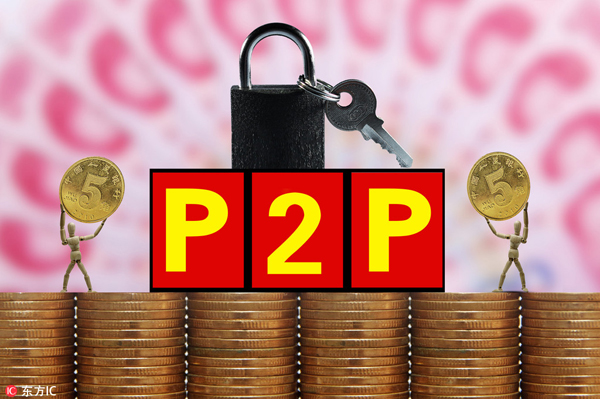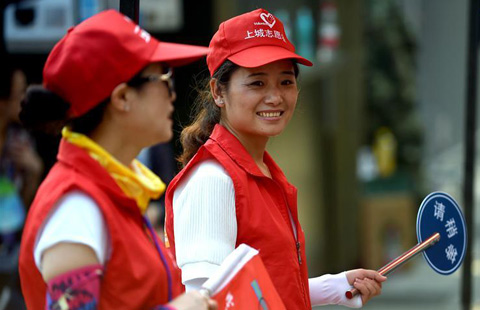'Milestone' regulation formulated to standardize P2P lending companies
By JIANG XUEQING (China Daily) Updated: 2016-08-25 06:49

China issued a regulation on Wednesday to toughen its control of peer-to-peer lending companies, thus cracking down on illegal fundraising activities through such platforms and preventing financial risks.
Jointly issued by the China Banking Regulatory Commission and three other ministries, the regulation emphasizes the role of P2P lending companies as financial information service intermediaries providing assessment and exchange of borrowing information for unrelated borrowers and lenders via internet platforms.
The CBRC provided a negative list to draw the business boundaries of P2P lending companies, forbidding them from cash pooling, absorbing public savings or providing any form of guarantee for borrowers.
It also clarified the market positioning of these companies as a supplement to traditional financial institutions that cannot satisfy small and scattered fund demands. According to the regulation, the borrowing balance of an individual borrower should not exceed 200,000 yuan ($30,068) on a single P2P lending platform and 1 million yuan on different platforms. Similarly, the borrowing balance of a legal entity should not exceed 1 million yuan on a single platform and 5 million yuan on different platforms.
To better ensure the clients' money safety, the banking regulator also required P2P lending platforms to have their clients' money deposited and managed by qualified banking institutions and to disclose information on the borrowers, financing projects and platform operation accurately on a timely basis.
Li Junfeng, director of the CBRC's financial inclusion affairs department, said the regulator is accelerating the process of building support systems by making regulatory guidance on the registration of P2P lending companies, third-party depository and management of P2P clients' money, as well as product information registration and disclosure, which will come out soon.
"The CBRC and financial service offices of local governments will divide their regulatory responsibilities and cooperate with each other," he said. "The CBRC will be responsible for making regulations and policies for P2P lending companies, constantly monitoring their business activities, operation and management, while coordinating cross-region regulatory actions. Financial service offices of local governments, on the other hand, will be responsible for the registration of P2P lending companies, their everyday information collection, and risk prevention, control, early warning and disposal."
According to incomplete statistics from the CBRC, as of the end of June, the number of P2P lending platforms that were still running normally in China rose 49.1 percent from the end of 2014 to 2,349. Their total loan balance jumped by 499.7 percent to 621.26 billion yuan.
Also by the end of June, 1,778 platforms, or 43 percent of the total, witnessed problems including the disappearance of executives with the clients' money and rising defaults.
Hu Eryi, head of p2p001.com, a Shenzhen-based internet financial web portal, said: "The newly released CBRC regulation will make up for the long-term lack of standards, information, intermediaries, and risk monitoring and early warning systems in the P2P lending sector. It's a milestone for the development of the sector and will become a necessary prerequisite for its standardized development."
- Brazil, China to expand cooperation in trade, services
- China's first flexible display production line to go into operation
- Experiment shows smartphone speech recognition faster than typing
- Leaders of G20 members, guest countries, intl organizations to attend G20 summit
- China launches online tourist guide platform
- Presenting China in a poetic way: G20 logo designer
- Volunteers participate in voluntary service for Hangzhou G20 Summit
- I am in Hangzhou: Entrepreneur Lucas


















